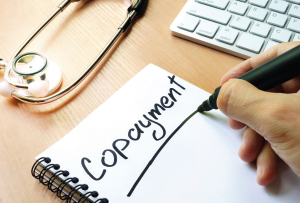
designer491 / SHUTTERSTOCK.COM
The healthcare industry is currently in an era of higher copays and deductibles, and effective patient collections are critical to the financial health of practices. The front desk staff of a practice is the first area to help with patient satisfaction and the key to a healthy revenue cycle. This front desk staff must collect the estimated copays, co-insurance and outstanding balances.
It should be the goal of every practice to collect 100% of copays and deductibles each day. Because asking for money can be uncomfortable, keep your patients informed of your policies through the practice website, patient portal and patient reminder phone calls. Effectively communicating to patients that payment is expected at the time of the visit can eliminate potential excuses, such as, “I don’t know if the cost of today’s appointment will apply to my deductible.” Also, it is very important to have a posted sign letting patients know “No Copay, No Visit,” and that the appointment will be rescheduled, except for acutely ill patients.
Keep in mind that patients sometimes do not understand their health insurance or financial responsibility; it is necessary to train staff members on the importance of collecting payment before patients are seen. Some staff may be more effective than others at collecting payments. It may be beneficial to have other employees observe their techniques so everyone is capable of performing this essential function.
Acceptable wording is key when collecting payments: For example, asking, “Would you like to pay your copay today?” implies that there is an option. Instead, upon check-in, staff should ask patients, “How will you be paying your copay/deductible/co-insurance today? We accept cash, debit or credit.” Additionally, it is important to track collection rates. It can be beneficial for front desk staff to complete an “If Not, Why Not?” report each day for monies not collected for copays, co-insurance and/or deductibles.
Unpaid balances are sometime inevitable in physician practices, and although it may be unpleasant to ask patients to pay their outstanding balances, it is critical to the revenue stream and bottom line of the practice. Access to outstanding balances should be readily available to billers and front desk staff. Make sure they are able to review patient accounts at check-in. As they confirm the patient’s insurance and demographics, staff can politely remind the patient about their outstanding balance and ask how they would like to pay. It’s crucial to not ask such questions as, “Do you want to pay your balance today?” The answer will usually be “No.” Simply ask how they would like to clear up the outstanding balance.
Financial hardship is sometimes unavoidable and offering patients a payment plan is an option to help them honor their financial obligation to the practice. If implementing payment plans for patients, it is necessary to have a well-defined document for patients to sign. Front desk staff should be trained to inform patients of this option and walk them through the policy and procedures. If necessary, it may be advantageous to have the practice manager or administrator meet with patients to discuss and document the details of any hardship before a payment plan waiver is signed. Flexible payment options should be offered to make it easier for patients to pay their balances.
These can include:
- Online bill pay—this will allow patients to log into the patient portal to pay from the convenience of their home, while at work or even from their phone.
- Phone payments—patients can call the office and pay by phone. It may be important to set up a dedicated line for phone payments or even explore a “credit card on file” program for recurring payments until the balance is paid.
- Automated payment plans—this will allow the patient to set up a specific day of the month a payment can be drafted from their credit card account, with the flexibility to reschedule or cancel payments if needed.
For unpaid balances in which an agreement cannot be reached, the practice manager or administrator should meet with the patient privately to discuss how the outstanding balance can be paid. A letter should be sent to the patient outlining the balance due with a billing statement with “DUE NOW” on it. If not paid, a second statement should be sent stating, “PAST DUE.” If these follow-up attempts fail, the next step should be a final notice letter giving the patient at least 15 days to pay before sending the balance to collections.
Taking steps to improve the collections of patient payment in a timely manner is essential to the financial stability of the practice. Education, training and an engaged office staff are critical to achieving the goals of the practice.
For questions or training on payment collection or accounts receivable, contact the ACR practice staff at [email protected].
